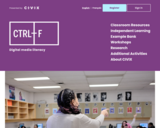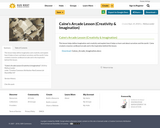
It is finally time for students to take on the Create Performance Task. For a total of 12 class hours, students should work on their projects with only types of teacher support allowed (essentially: Advise on process, don’t influence or evaluate ideas). Students may also work with a collaborative partner in *in development of their program* - written responses must be done on their own.
The lesson includes reminders about how you can interact with students while they are working on their projects, and suggestions about time line. The Create PT requires a minimum of 12 hours of class time. At the end, students will submit their program code, program video, and written responses through their AP digital portfolio.
- Subject:
- Coding
- Computer & Digital Technologies
- Computer Science
- Education
- Educational Technology
- Math
- Science
- Material Type:
- Activity/Lab
- Lesson
- Provider:
- Code.org
- Provider Set:
- CS Principles 2019-2020
- Date Added:
- 10/11/2019





